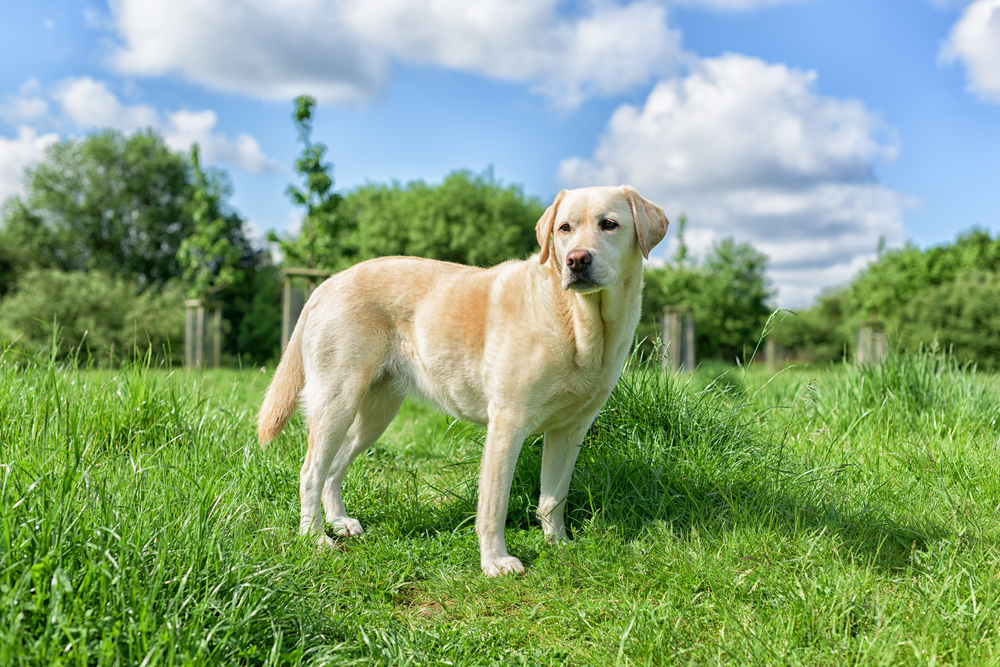Labrador Retrievers are one of the most popular dog breeds in the world, known for their friendly, intelligent, and versatile nature. Effective training is essential for ensuring your Labrador grows up to be a well-behaved and well-adjusted companion. In this article, we’ll provide you with simple and practical tips to help you train your Labrador Retriever successfully.

Understanding Labrador Retrievers
Labrador Retrievers are known for their outgoing personalities and eagerness to please their owners. They are highly intelligent and respond well to positive reinforcement training methods. However, their friendly nature and high energy levels can also lead to common behavioral challenges, such as excessive barking, chewing, and jumping. Understanding your Labrador’s temperament and characteristics is crucial for developing an effective training plan.
Establishing a Positive Training Environment
Creating a comfortable and distraction-free space is essential for successful training sessions. Choose a quiet area in your home or a fenced-in yard, and make sure to keep training sessions short and frequent, as Labrador puppies have a short attention span. Consistency is key, so establish a routine and stick to it. Use positive reinforcement, such as treats and praise, to encourage good behavior and build a strong bond with your Labrador.

Basic Commands and Training Techniques
Teaching your Labrador Retriever basic commands, such as Sit, Stay, Come, and Down, is the foundation of their training. Start with short sessions, focusing on one command at a time. Use a clicker or a specific word to mark the desired behavior, followed by a treat. Repeat each command several times during each session, and be patient and consistent. As your Labrador masters each command, gradually increase the difficulty and duration of the training.
Socialization and Interaction
Early socialization is crucial for the development of a well-rounded and confident Labrador Retriever. Introduce your puppy to new people, pets, and environments in a positive and controlled manner. Ensure that all interactions are supervised and that your Labrador feels safe and comfortable. Socialization helps prevent behavioral issues and ensures your Labrador grows up to be a friendly and well-adjusted dog.

Handling Common Behavioral Issues
Despite your best efforts, your Labrador Retriever may still develop some unwanted behaviors, such as excessive barking, chewing, or jumping. Address these issues promptly using positive reinforcement techniques. For example, if your Labrador jumps up on people, reward them with a treat when they have all four paws on the ground. If the behavior persists or becomes a safety concern, consider seeking the help of a professional dog trainer or behaviorist.
Exercise and Mental Stimulation
Labrador Retrievers are high-energy dogs that require regular physical exercise and mental stimulation. Provide your Labrador with at least one hour of exercise per day, such as playing fetch, swimming, or going for a walk. In addition to physical activity, engage your Labrador’s mind with interactive toys, puzzle feeders, or training games. A well-exercised and mentally stimulated Labrador is less likely to develop behavioral issues and more likely to be a happy and healthy companion.

Maintaining a Training Routine
Training your Labrador Retriever is an ongoing process that requires patience, persistence, and consistency. Set achievable goals and track your progress to stay motivated. Adjust your training techniques as your Labrador grows and matures, and incorporate training into your daily life for continued success. Remember, training is not just about teaching your Labrador commands; it’s about building a strong bond and creating a well-behaved companion.
Conclusion
Training a Labrador Retriever can be a rewarding and enjoyable experience for both you and your dog. By following these simple tips and being patient and consistent, you can help your Labrador grow into a well-behaved and well-adjusted companion. Remember, every Labrador is unique, and what works for one may not work for another. Be adaptable and willing to try different techniques until you find what works best for your furry friend.

Additional Resources
For further information on training Labrador Retrievers, we recommend the following resources:
- “The Labrador Retriever Handbook” by Miriam Fields-Babineau
- “Training the Best Dog Ever” by Dawn Sylvia-Stasiewicz and Larry Kay
If you need additional help or guidance, consider contacting a local dog trainer or attending a training class in your area. With the right training and care, your Labrador Retriever can become a loyal, well-behaved, and loving companion for life.

